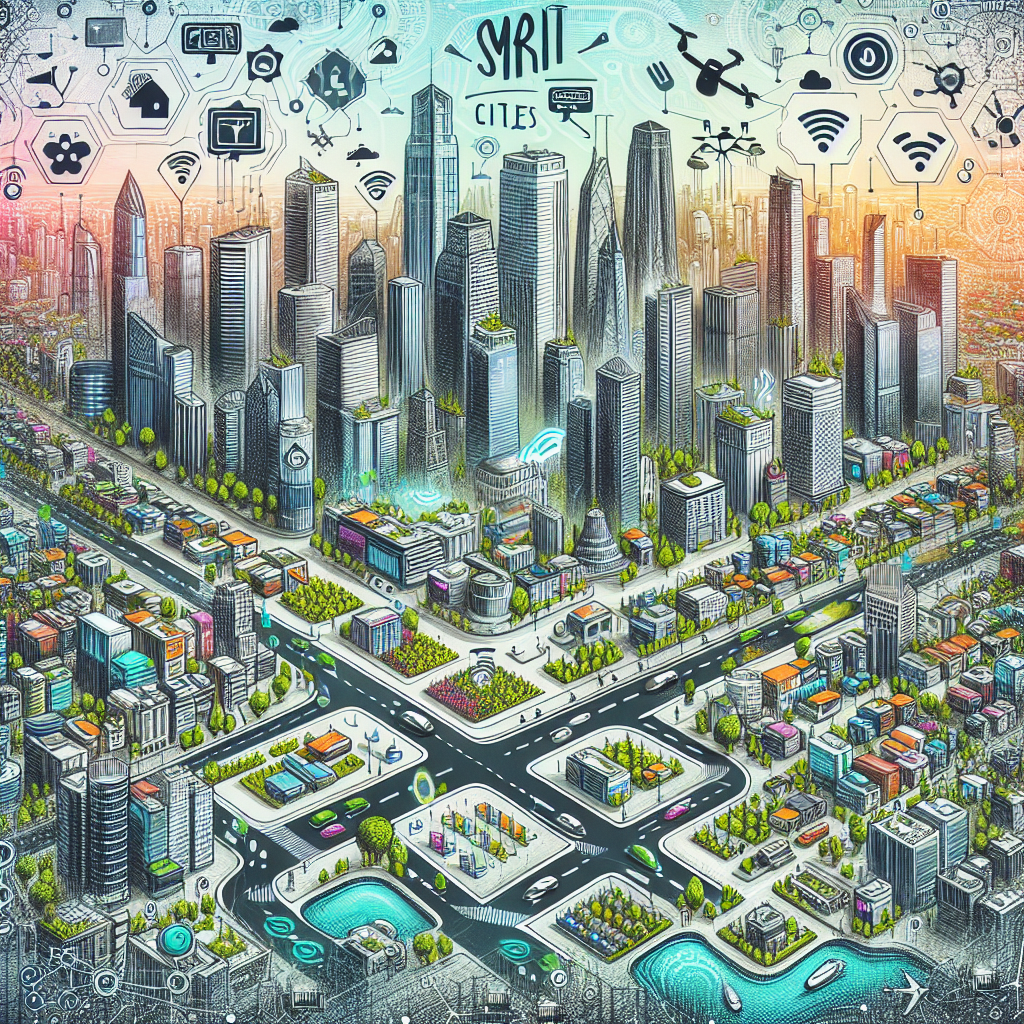Smart Cities: How Technology is Reshaping Urban Living
Introduction
The concept of "Smart Cities" is no longer just a futuristic idea; it is rapidly becoming a reality across the globe. As urban populations continue to swell, cities are turning to technology to manage resources efficiently, improve the quality of life, and ensure sustainable development. From Barcelona to Singapore, smart city initiatives are transforming the very fabric of urban living.
What is a Smart City?
A smart city utilizes data, information, and communication technology to enhance the efficiency of city services and meet residents’ needs. Key components often include the Internet of Things (IoT), AI, big data, and edge computing. Collectively, these technologies work to create systems that not only solve immediate urban challenges but also anticipate future needs.
Transportation Revolution
One of the most noticeable impacts of smart city initiatives is on urban transportation. Traffic congestion, a daily headache for millions of commuters, is being alleviated through the use of intelligent traffic management systems. Cities like Los Angeles and London have employed AI-driven solutions to optimize traffic flow in real-time by analyzing data from cameras, sensors, and even social media.
Public transportation systems are also getting a tech makeover. Ride-sharing services integrated with public transit, real-time tracking of buses and trains, and smart traffic lights are part of a broader strategy to make commuting less cumbersome. For instance, Barcelona’s "smarter" bus stops provide real-time updates and are equipped with free Wi-Fi, enhancing user experience.
Waste Management and Sustainability
Managing waste efficiently is a colossal task for any urban area. Smart cities tackle this issue through IoT-enabled waste bins equipped with sensors that notify city officials when they need to be emptied. This data-driven approach helps in optimizing waste collection routes, saving fuel, and reducing pollution.
Sustainability is another cornerstone of smart city planning. Solar panels, wind turbines, and energy-efficient buildings are becoming the norm. Smart grids allow for real-time monitoring and management of energy consumption, reducing wastage and lowering costs. In Dubai, the integration of smart meters has led to a significant reduction in water and electricity usage, reflecting a positive trend towards resource conservation.
Enhanced Public Services
Public safety, healthcare, and education are experiencing remarkable advancements thanks to smart city technologies. Intelligent surveillance systems powered by AI algorithms can predict and deter criminal activities. Facial recognition technology paired with vast data networks helps in rapid identification and resolution of security threats.
In healthcare, telemedicine is transforming patient-doctor interactions. IoT-enabled devices allow for real-time health monitoring, ensuring timely medical interventions. During the COVID-19 pandemic, several cities deployed drones for monitoring social distancing, delivering medical supplies, and disseminating information.
Educational institutions are adopting smart solutions to improve learning outcomes. Interactive digital classrooms, AI-based personalized learning, and cloud-based platforms are making education more accessible and adaptable to individual needs.
Citizen Engagement
A smart city thrives on the participation and engagement of its residents. Mobile apps and online platforms allow citizens to report issues like potholes, broken streetlights, or water leaks in real-time, ensuring swift resolutions. Cities like Amsterdam have even created digital twins—virtual replicas of the city—where residents can visualize and contribute to urban planning initiatives.
Furthermore, participatory budgeting platforms enable residents to have a direct say in how public funds should be allocated, fostering a sense of community involvement and transparency in governance.
Challenges and Future Directions
While the promise of smart cities is enticing, it comes with its set of challenges. Data privacy and security concerns are paramount as cities collect vast amounts of personal data. Ensuring equity remains another key issue; technology should benefit all residents, not just the tech-savvy or affluent.
Scalability and interoperability of various technology systems also pose challenges. Technologies need to be adaptable to different urban contexts and capable of integrating with existing infrastructure.
Nevertheless, the trajectory is clear: cities will continue to evolve, leveraging newer, more advanced technologies like 5G, blockchain, and quantum computing to create even smarter, more responsive, and more inclusive urban environments.
Conclusion
The rise of smart cities epitomizes how technology is reshaping urban living, making cities more efficient, sustainable, and livable. As we move forward, continuous innovation and citizen participation will be crucial in transforming urban spaces into thriving hubs of innovation, sustainability, and community. With the right balance of technology and human ingenuity, smart cities have the potential to offer not just a better quality of life but also a sustainable future for generations to come.


